Tokyo DisneySea (Urayasu, Japan)
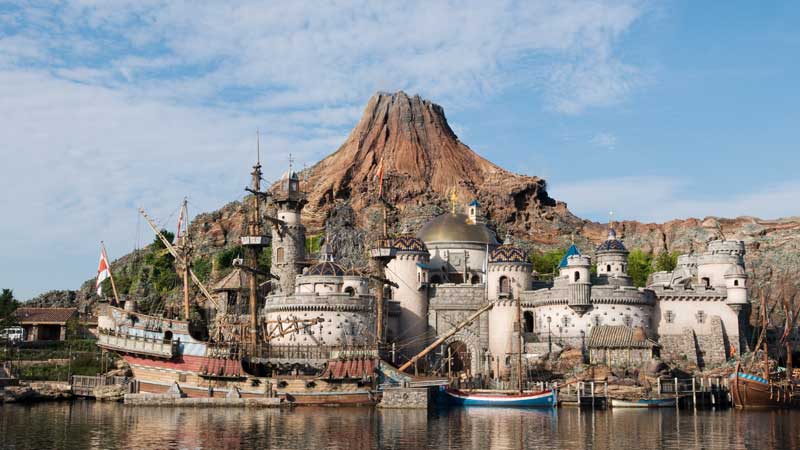
Opened: September 4, 2001
Background: Opened the same year as the underbuilt California Adventure, Tokyo Disneyland’s second gate was 2001’s Tokyo DisneySea – a $3 billion nautical park built on reclaimed land literally set on the edge of the Tokyo Bay. Tokyo Disneyland is frequently cited as the best theme park on Earth. More to the point, it’s the perennial example “the park as the E-Ticket.” You could visit Tokyo DisneySea, ride nothing, and still leave feeling you’d had a spectacular experience. This is a park you want to get lost in.
The park’s seven “ports of call” represent far-flung regions whose legends and lore connect to the seas, and in the best Disneyland tradition, each is kinda sorta a “real” place, but passed through a lens of fantasy and romanticism and super-saturation.
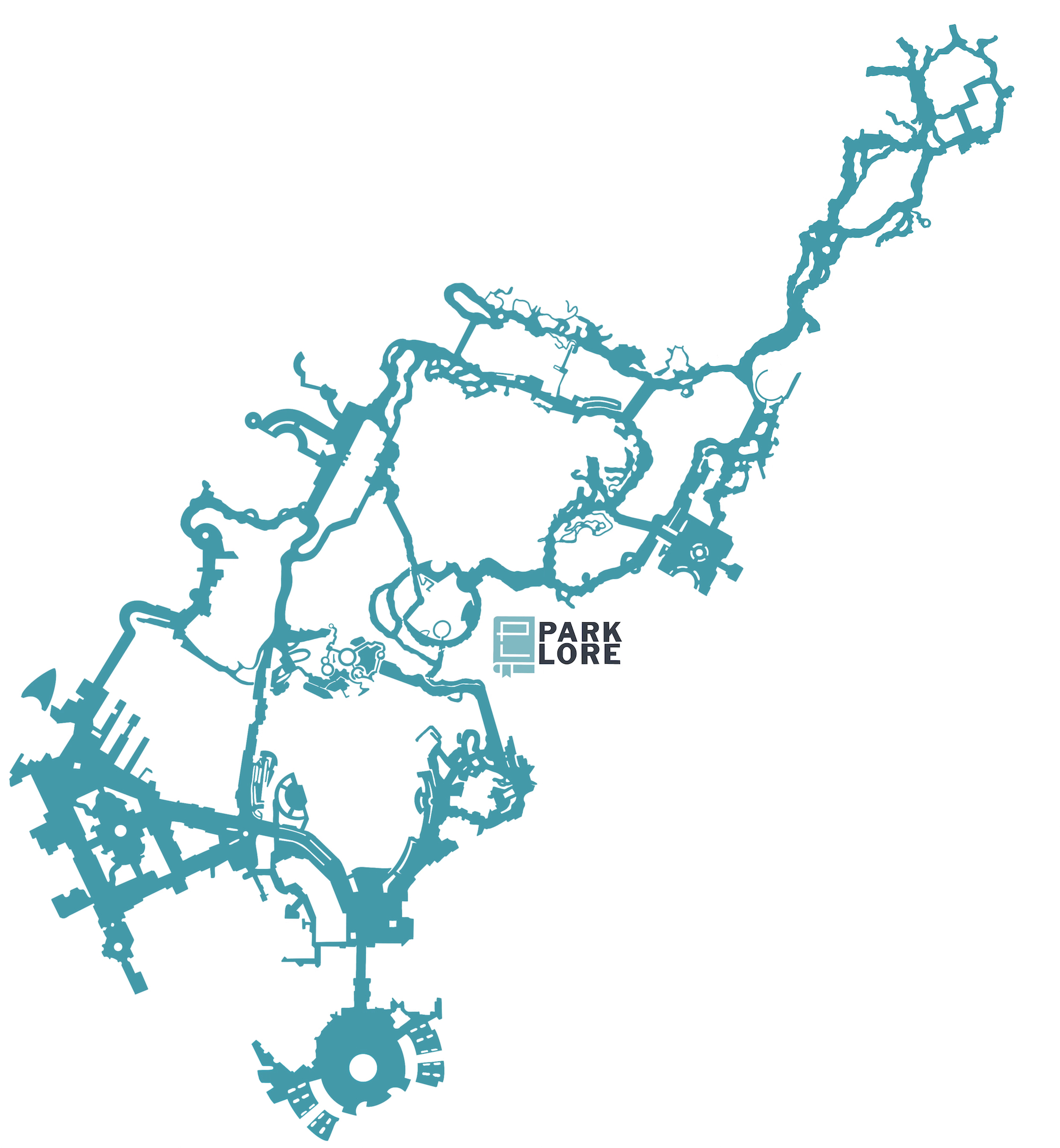
Pathways: Trying to make sense of DisneySea’s layout on paper is pretty difficult. Tokyo DisneySea ignores many of the principles of design that govern park paths at other Disney Parks. There’s no “hub.” No “figure-8.” No “loop.” No corridor for a “spine.” Instead, there are just choices. Forks in the road. Bridges. Tunnels. Roads less traveled. There’s no direct route out, nor an obvious, circuitous route tailor-made to drop you off at each E-Ticket. The best way to tour DisneySea is just to set out into it.
Adding even more complexity to the park’s layout is the new Fantasy Springs – a massive 15-acre land built on a far-flung expansion pad that meanders between Tokyo Disneyland and DisneySea’s second in-park deluxe hotel, the Fantasy Springs Hotel.
The central land, Mysterious Island, is somewhat of an anti-hub; once you’ve passed inside via any number of bored tunnels, it’s nearly impossible to recognize which passage will take you where you want to go. (The iconic Mount Prometheus that rumbles overhead is one of our Seven “Natural” Wonders of the Theme Park World and home to the Modern Marvel: Journey to the Center of the Earth)…
Outside of Mysterious Island, way-finding is provided by, y’know, the actual Pacific Ocean seemingly held out of the park by a single leaking dam. And to that point, DisneySea’s layout may look like absolute nonsense when you can only see the paths. But there’s something that gives the park’s form context: water. What looks like an entirely random smattering of paths transforms with the addition of the park’s waterway, which flows from the entry’s Mediterranean Harbor, through the American Waterfront’s New York and Cape Cod, into the futuristic Port Discovery, between the two opposing coasts of the Lost River Delta, along Arabian Coast, then into the volcanic chasm of Mysterious Island. Give it a try using the slider below:
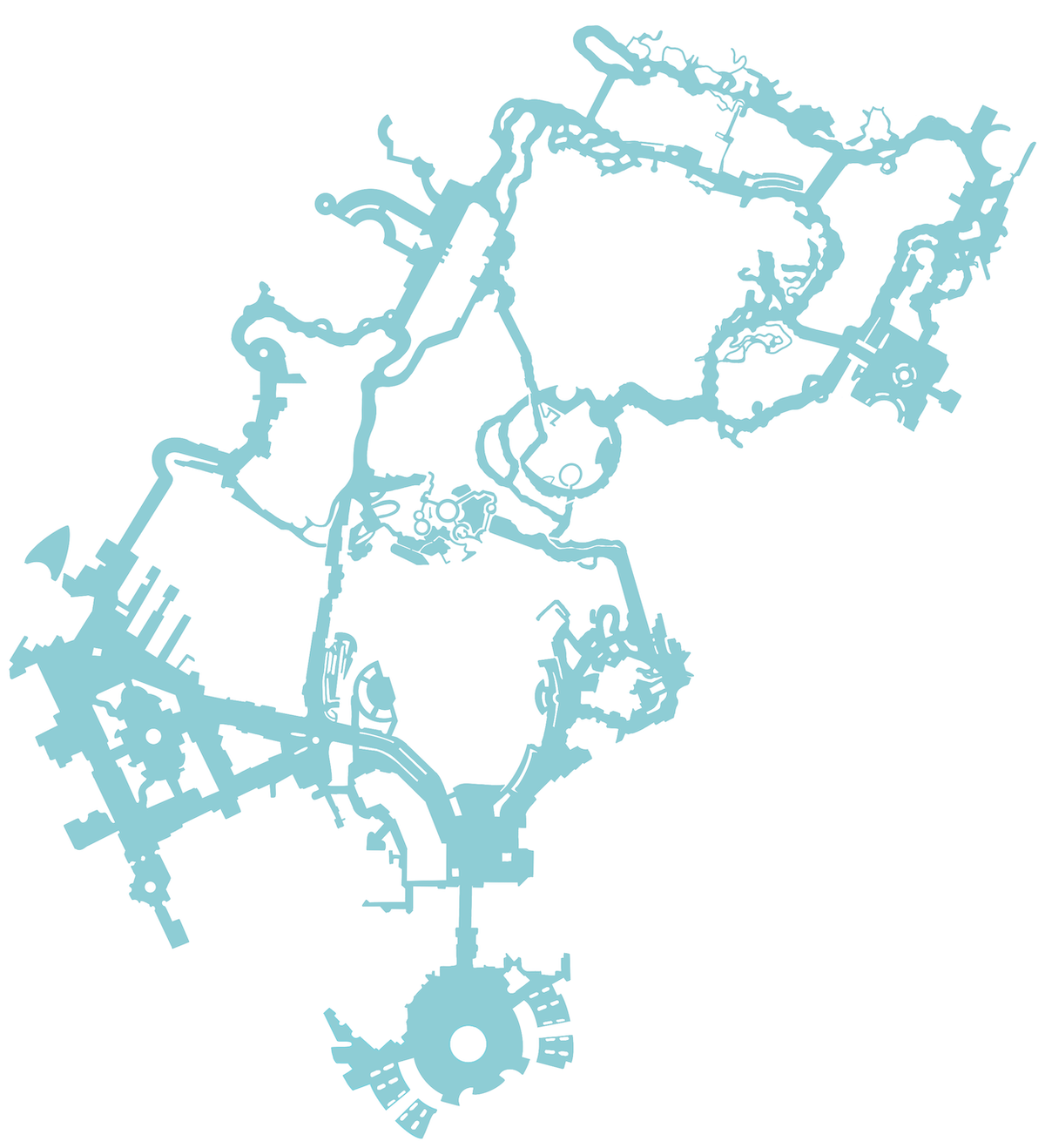
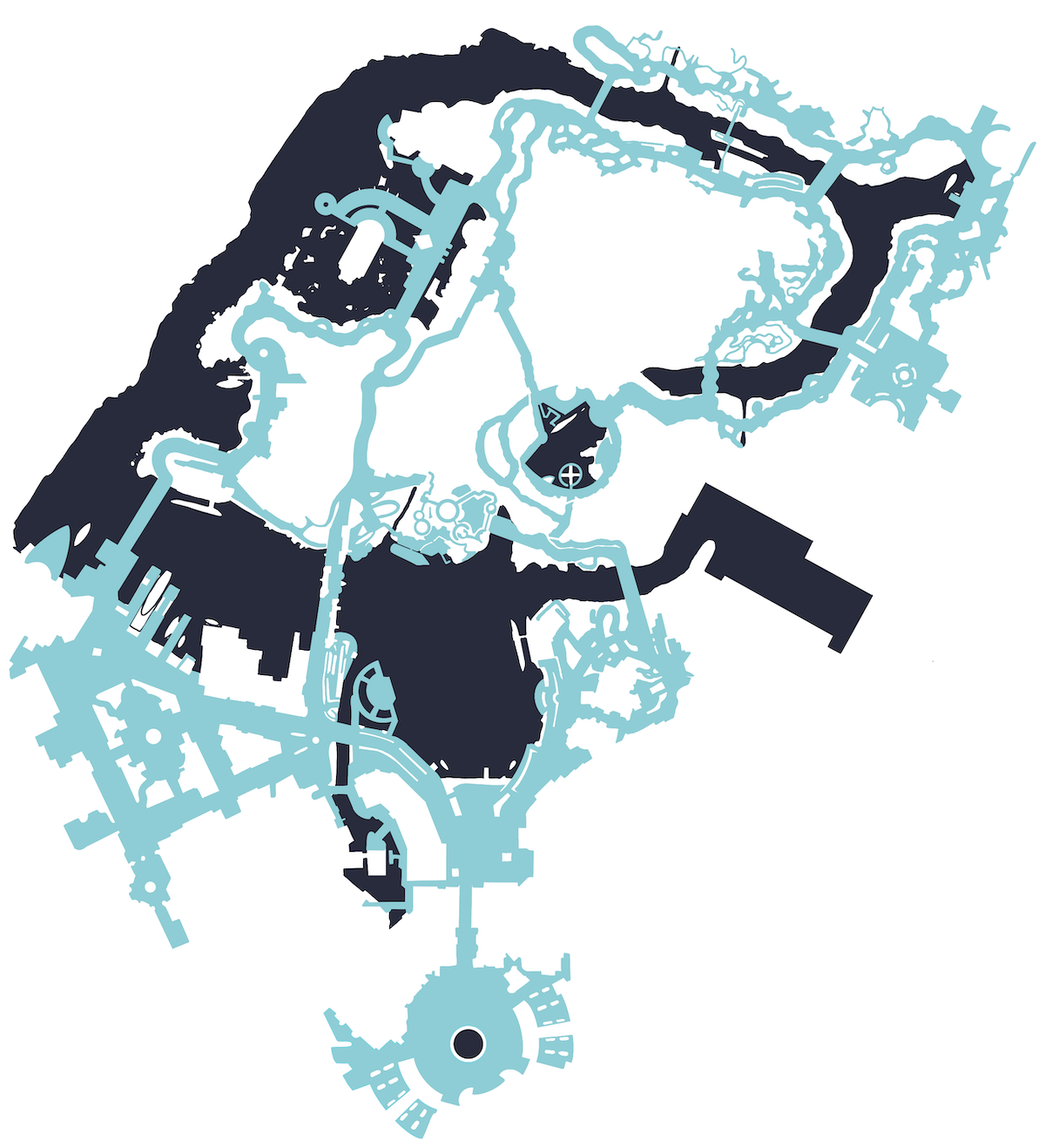
Universal Epic Universe (Orlando, Florida)
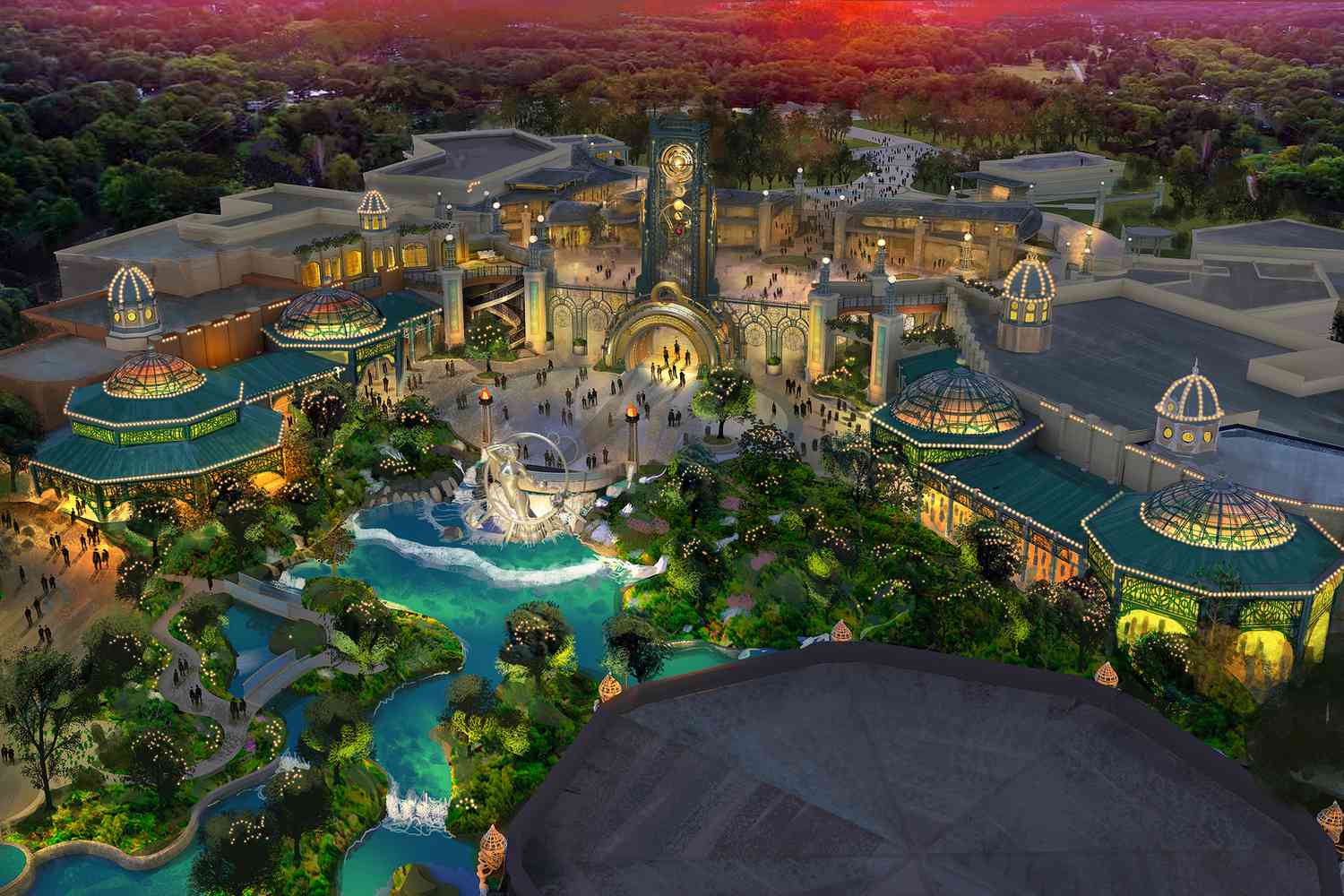
“This changes everything.” Or so asserts Universal in regards to its third theme park in Orlando, Universal Epic Universe. Meant to permanently shift the gravity in Universal Orlando’s favor, Epic Universe is the first new theme park from Disney or Universal in the U.S. since 2001’s California Adventure. But more to the point, it’s the first from-scratch U.S. park built after the Wizarding World of Harry Potter made the “Living Land” formula standard.
But really, if Epic Universe offers any kind of game-changing innovation, it almost certainly has to do with its “hub.” Guests will enter Epic Universe through the Chronos – a glistening astrological clocktower drawing the cosmic energy needed to power portals into the worlds beyond – and emerge in Celestial Park. Vowing to put the “park” back in “theme park,” this massive central space will be an otherworldly garden of stepped waterfalls, reflecting pools, and bronze, subtly sub-divided into elemental zones devoted to Fire, Water, Earth, Air, and Aether.

From there, portals will diverge into the park’s four “IP Lands” (Dark Universe, The Wizarding World of Harry Potter: Ministry of Magic, How To Train Your Dragon: Isle of Berk, and the headlining Super Nintendo World).
But as the park’s predicted paths reveal, those lands aren’t exactly gargantuan. It’s really Celestial Park that serves as the park’s centerpiece, and a “home base” that guests will return to between each of the fantastic worlds beyond. That centering ability is evident in the simple geometry that’ll make this space navigable, and the environmental warmth that’ll power its narrative.
Which leads to another potentially cutting-edge feature of Epic Universe. Reportedly, Universal is planning for Celestial Park to become a kind of CityWalk for the new Convention Center-adjacent South Complex it occupies. In other words, though the portals to Potter, Dragons, Monsters, and Mario might power down at 9 PM, Celestial Park can stay open for hours after… even powering down the ticket scanners and opening the park’s core up to the public. It’s a novel way to use this massive space – and all of the shops, restaurants, and the Helios Grand Hotel that will inhabit it.
A quarter century ago, Islands of Adventure’s “IP lands around a lagoon” became the default layout for new builds. Though Universal might be thinking of Mario when they promise that “This Changes Everything,” we’d offer that Epic Universe’s true innovation will probably be remembered for introducing yet another organizing principle: a central park.
Works of Art
There’s no question that from Walt Disney to modern Imagineers, theme park designers understand the interplay between urban planning and experience design; how the shape and flow and direction of walkways can transport people figuratively as well as literally. Whether or not you agree that the pathways of theme parks encapsulate their personalities, we we can at least be sure that even from above, theme parks are works of art.
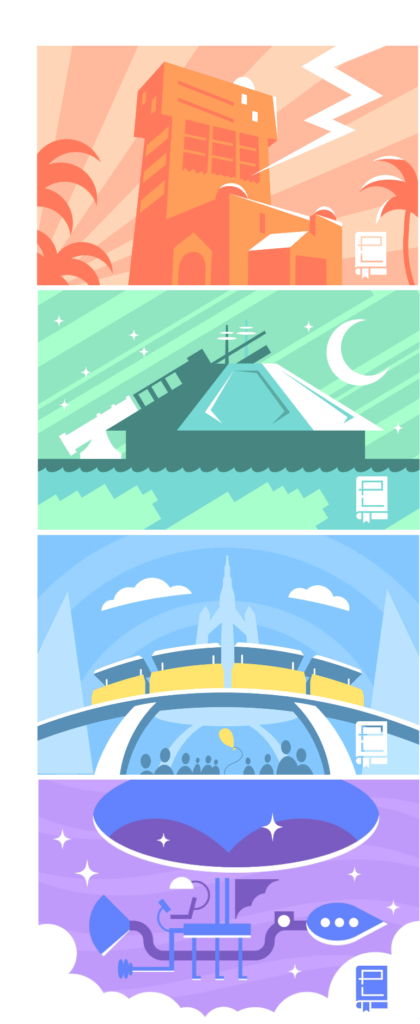
You can purchase prints of my hand-illustrated “Park Paths” series on Park Lore’s shop. And if you appreciate our deep dives, you can become one of the monthly supporters who keeps Park Lore in-depth, ad-free, and clickbait-free by becoming a Member for as little as $2 / month.
Members can unlock rare concept art in every tale, reveal attraction audio streams in select stories, gain access to over a hundred exclusive articles in our quick-read Extra Features and in-depth Special Features collections, gain exclusive podcast extras, and receive an annual member card and merch in the mail! (Plus, y’know, supporting research-based, ad-free, clickbait-free, in-depth theme park writing!)


